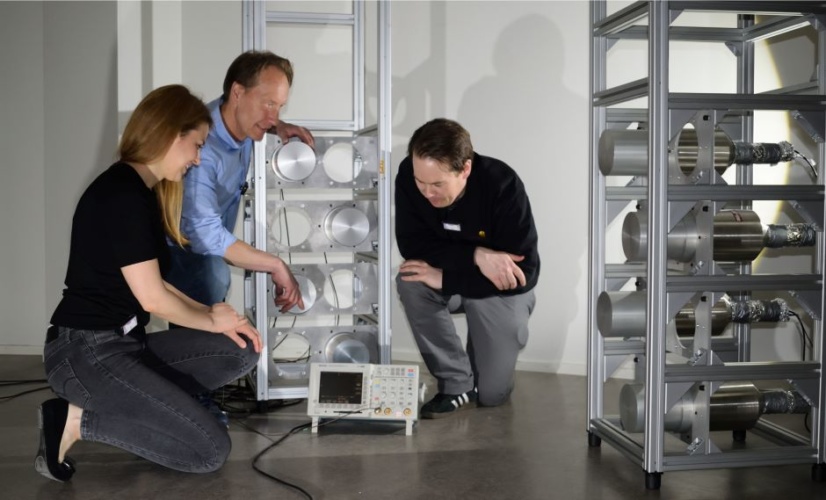
Bo Cederwall, professor of physics at KTH Royal Institute of Technology in Stockholm, said the technology can be used in air and sea ports to routinely inspect passengers and goods. The research is published in the journals Science Advances and Science.
CLICK FOR MORE FROM DEFENCE & SECURITY
A form of tomography, the system enables quick 3D imaging of the source of neutron and gamma ray emissions from weapons-grade plutonium and other special nuclear materials, Cederwall said in a statement.
The so-called Neutron-Gamma Emission Tomography (NGET) system goes beyond the capabilities of existing radiation portal monitors by measuring the time and energy correlations between particles emitted in nuclear fission. It then uses machine learning algorithms to visualise where they are coming from. The system looks for coincidences of neutron and gamma ray emissions, which pinpoint their origin when mapped together in real-time.
”The technology has a very high sensitivity and can within a few seconds detect gram-amounts of plutonium depending on the application and the plutonium isotope composition,” Cederwall said. “It takes a little longer to get a really good picture so you can see exactly where the plutonium is. However, this can be done completely automatically.”
As well as nuclear weapons and radiation-dispersing dirty bombs, NGET can be used to detect environmental radiation, such as leaks from nuclear facilities or even natural sources. Cederwall said the research group is looking into equipping drones with the NGET system for this purpose.
“In case of a radiological emergency, it is extremely important to be able to quickly map the radioactive contamination in the environment in order to protect the population in the best possible way,” he said.
The research was funded by Swedish National Safety Authority.




Red Bull makes hydrogen fuel cell play with AVL
Surely EVs are the best solution for motor sports and for weight / performance dispense with the battery altogether by introducing paired conductors...